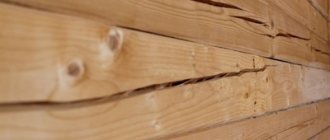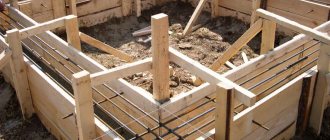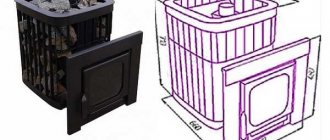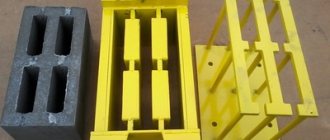Facing brick is the most common building material for exterior decoration of buildings. It gives the structure a beautiful, attractive appearance and has a long service life. But sometimes after construction is completed, whitish spots and stains appear on the brick. This kind of plaque on the walls of a brick building is called efflorescence. Where do they come from, why are they dangerous and what to do about it?
What is the reason
Efflorescence on a brick is the appearance on the surface of a brick of a thin layer of various salts, which appears for several reasons. Most often this happens when the mortar for brickwork is prepared incorrectly - an excessive amount of water is added or a low-quality mixture is taken. In this case, water will evaporate in large quantities, leaving deposits in the form of salts on the surface. The chemical composition of water and laying bricks in the spring-autumn periods can also affect its appearance, because the abundance of humidity only enhances this process, and hard water, when evaporating, leaves all the microelements on the masonry.
Efflorescence is also a good indicator - if all the requirements were met during the construction process, then the reason lies in the dishonesty of the manufacturer himself. In fact, aesthetics fade into the background here - the main danger is that brick unprotected from salts begins to deteriorate faster and its service life is reduced significantly. There is a common misconception among many builders that before laying bricks, they need to be soaked, so that later, during the process of screeding the brickwork, the mortar will tighten evenly and the bricks will not crack.
Destruction of brick by salts over time Source kronotech.ru
This usually leads to the fact that immediately after drying, a white coating appears on the surface of the brick wall, which only intensifies over time. It is for this reason that quality control of work during the construction of brick buildings is important, which must take place at all stages. Traces of salt migration in hardened concrete mortar are also an excellent marker that the mortar was prepared without taking into account any building codes.
SNIP standards 03.03.01-87 in paragraphs 7.32 and 7.51 clearly regulate this issue: using a solution for facing work with a high content of chemical additives, modifiers and impurities is unacceptable, the alkali content in the solution should not exceed 0.6%, and the mobility of the solution should not be more than 4-6 cm. As for the thickness of the horizontal seam, according to the standards it ranges from 10 to 14 mm and should not go beyond these limits.
If high-quality brick is used (even if it is not simple red brick, but clinker), in acceptable weather conditions, then the problem of efflorescence lies only in the mortar and installation. To avoid the appearance of salts on the surface of the brickwork, you need to use a rigid mortar with an extremely low content of potassium and sodium oxides, or replace it with plasticized hydrophobic cement.
Traces of salts in mortar Source revkz.ru
The mortar should not get on the front side of the masonry, and any mortar that gets into it must be removed before it hardens. During rain, it is better to refrain from laying bricks, covering the brick with plastic film or other waterproof material, and sealing the horizontal seams with jointing before they harden.
In addition, you can also cover the facade with a protective compound or primer. Such measures will prevent the formation of salts due to the evaporation of water from the solution. In the case where salting appears on masonry that has already hardened for a long time, do not despair - the brickwork itself is not subject to destruction, the danger of salts threatens only the surface, which is subject to atmospheric influence and the formation of new salts, and solving this problem is not so difficult.
Folk remedies
Many people do not trust industrial chemistry. In addition, special means for washing off efflorescence are expensive and not available to everyone. Therefore, you can use old but time-tested methods for removing white stains:
- Add three tablespoons of vinegar and a little liquid detergent to a ten-liter bucket of water. Stir and apply to the wall. After 10 minutes, rinse with water.
- Use 4% hydrochloric acid solution. Apply acid to a damp brick wall and leave for ten minutes. Afterwards, rinse with plenty of water.
- Apply ammonia to the brick wall. After some time, rinse off with a brush and water.
After using one of the methods, the wall is thoroughly dried and then treated with a water-repellent composition. The solution is applied with a brush, sometimes in two layers. After all the necessary procedures have been carried out, the brick will stop absorbing moisture. The water will just roll off. When applied correctly, the protective layer will last for six years or more.
Found a violation? Report content
What can be done
First of all, don't panic. Simple rules will help to avoid salt deposits in the future: it is necessary to store the brick under a canopy, preferably in the shade, in no case allow it to be excessively moistened, use at least washed quarry sand if it is not possible to buy river sand, do not prepare too thin a solution and reduce the amount added modifying additives.
Proper storage of facing bricks will avoid salt deposits in the future Source kirpichrb.ru
See also: Catalog of companies that specialize in finishing materials and related work
To avoid unnecessary suspicions, it is better to play it safe and buy bricks only from those manufacturers who have been on the construction market for a long time and enjoy a certain reputation, even if it is a little more expensive - saving on bricks does not lead to anything good.
Secondly, you need to know how to remove efflorescence on brick that has already appeared. It is not enough to simply water the wall with a hose for the problem to solve itself. Many organizations are engaged in cleaning whitened facades and, for a certain budget, will return the building to its original appearance of beautiful red brick.
If you want to try to remove efflorescence on brick with your own hands, then there is room for experimentation - there are a huge number of brick and alcohol solutions on the market for removing salt on brick. They all have one thing in common: “a product for removing efflorescence on bricks” and any consultant at a construction supermarket or seller at the construction market will tell you which efflorescence agent is best to buy. But which one is really better to use will have to be selected by trial and experimentation, since the chemical composition of salts varies depending on the reason for their appearance.
Violation of the laying process Source stroy-podskazka.ru
It is also worth understanding that not only brick, but also concrete is susceptible to the formation of salts. If water penetrates from the inner layers of concrete into the outer layers or cracks occur, there is a high probability of white salt stains forming on the concrete surface. This happens due to the formation of free calcium oxide during the hydration of cement in the concrete solution, and the water present in the solution carries calcium oxide to the surface during evaporation.
This process will continue until a balance is reached between the solutions, and when the surface comes into contact with air, calcium carbonate will form, which is very difficult to remove. Such formations are removed using substances that can dissolve calcium salts, followed by mechanical action (for example, a brush). Compared to brick, cleaning concrete from efflorescence can be more of a hassle.
How to remove efflorescence on facing bricks? Of course, it is better to use a hard brush, but if these are not obvious salt crystals, but a light whitish coating, then a simple roller will do. After applying with a roller or brush, it is necessary to give the solution time for a chemical reaction, then rinse it all off with plenty of water, let the brick dry, and then be sure to treat it with protective agents against the formation of salts.
Formation of salts on concrete surfaces Source monolit-gr.ru
Removal methods
If stains begin to appear, you need to immediately take measures to eliminate them; you should not put it off for later. There is a misconception that the salt layer should simply be washed off with water. Treating the surface with water will cause the salts to dissolve and move inwards. Such a wash will only worsen the damage to the masonry. Cleaning bricks from efflorescence can be carried out mechanically or using chemical cleaning mixtures.
Mechanical cleaning
Removing stains using mechanical methods requires considerable physical strength. The surface must be thoroughly rubbed with hard brushes until the entire white layer can be removed. With a small area of damaged surface, this can be done.
Advice! If a large area is damaged, you can use a drill with a special brush attachment. This device makes it easier to remove salt deposits.
Great luck - having a sandblasting machine. The work must be carried out competently in compliance with safety rules. Using a compressor, a stream of air with sand is pumped onto the contaminated surface, under the influence of which not only white stains of salt are removed, but also the remains of the concrete mixture, stains of soot, paint, mold, and moss. Work must be carried out wearing a mask and goggles to prevent particles suspended in the air from reaching the mucous membranes.
How to prevent re-deposition of salts
When removing efflorescence from brickwork is completed, it is worth thinking about how to protect the wall from the reappearance of white spots. After treatment with special chemicals, the strength of the building material increases and becomes impermeable to precipitation, however, without a protective coating, these properties will not be preserved for a long time - you need to think about water-repellent impregnation.
On the modern building materials market there is a huge variety of means that allow you to protect the facade of a building from the effects of water, which will give the building a clean and well-groomed appearance for many years.
Brick protected from moisture always looks like new Source roomble.com
How to protect masonry from efflorescence?
First of all, you should use high-quality building material. In addition, the following will help to significantly reduce the risk of whitish streaks:
1. Introduction of special additives into masonry mortar to increase plasticity instead of traditional lime. Such additives are microfoaming agents-hydrophobizers, for the production of which organosilicon compounds, resin, fatty or naphthenic acids are used.
2. Compliance with the wall drying regime. Plastering work inside the house cannot be done until the masonry is completely dry. If a building built in summer is dried from the inside in winter and the walls are simultaneously plastered, due to the difference in temperature and pressure, moisture from the plaster will be forced out into the brick and salt will appear on the outside of the walls in the spring.
3. Protecting masonry from waterlogging. Do not add excess water to the mortar, soak the bricks or leave the masonry in the open air. It is not advisable to carry out work on the construction of walls in the autumn-winter period.
Briefly about the main thing
To make the wall look like new always, and not just in the first months after construction, you must:
- Comply with all technological requirements for choosing a brick and store it under a film to protect it from rain or snow;
- Prepare a solution with a minimum of additives, river (or washed quarry) sand and water purified from salts;
- Observe the climatic and weather conditions of construction, installation and drying;
- Promptly clean the facade from emerging stains and protect the brickwork with a water-repellent agent from exposure to water.
You need to understand the causes and consequences of the appearance of efflorescence, that this is not some kind of problem that appears randomly, but a harsh reality that needs to be dealt with not later, but to organize the construction process in such a way as to avoid the very causes of salt deposits. It depends only on you what the appearance of the brickwork will be.
Ratings 0
CemStone
Highly effective complex additive for masonry and other building mortars.
More details
The use of CemStone allows you to achieve the following advantages:
- increasing the lifespan of the solution (up to 5 hours);
- increased mobility (from P1 to P4);
- saving cement and water in the batch;
- increased strength;
- reduction of shrinkage deformations;
- rapid strength gain (design strength is achieved after 7 days).
And no efflorescence!
You should also not rely on salt for cold temperatures. It is advisable to use antifreeze additives HotIce and CemFrio, which allow you to work even at very low temperatures (down to minus 20°C) and increase the strength of the solution, as well as water resistance and frost resistance.
We advise you to study: For carrying out work in cold weather
Consequences of salt deposits
Visual damage to the decorative brick cladding of a building is not the only problem that arises from efflorescence. Salt crystals appear both on the surface and in the flesh of the finish through pores, cracks and technical openings. Plaque gradually turns into growths that can have a destructive effect on the walls of the voids being filled.
Over time, this manifests itself in the following:
- delamination of masonry;
- the appearance of chips without mechanical impact;
- change in the shape of a brick due to corrosion of the surface layer.
The listed consequences are the result of several factors, including the concentration of salt compounds. Without additional influence, this happens over a long period of time.
How to remove efflorescence on brick if it has already appeared
To remove efflorescence, special products are also used, which contain acids (acetic or hydrochloric) or alcohols (for example, ammonia). They effectively dissolve salts, removing whitish efflorescence. However, if the reason for its appearance is poor-quality brick or water getting on its surface, then most likely the procedure will have to be repeated.
The process of removing efflorescence using the SAD1 safescreen product takes place in four stages:
- Removing efflorescence with a stiff brush moistened with a cleaning mixture;
- Rinsing with clean water under pressure;
- Treatment of brick on the facade with special putty compounds in order to clog the pores and block the release of water-soluble salts to the outside;
- Application of a hydrophobizing composition to create a water-repellent shell.
We recommend reading
Preventive measures
It is better to prevent a problem than to get rid of it. Such work takes a lot of time and effort and requires financial expenses. In addition, no one will give you a guarantee that the white spots will not appear again. Factors that could damage brick walls should be prevented in advance:
- It is recommended to purchase brick stone from trusted suppliers; you should not save on this. Remember that it is almost impossible to distinguish low-quality material from normal brick by external signs. To avoid mistakes, study consumer reviews;
- A thick mortar mixture is prepared for construction work; all work is carried out under favorable weather conditions. The best time to conduct them is the summer season;
- It is not recommended to add additives to it when preparing a solution. The dry mixture is diluted with clean water, sand is used exclusively from river sand;
- If there is a need to suspend masonry work, the erected sections of the walls must be covered with plastic film. It is best to bring the walls under the roofing as quickly as possible to minimize the negative impact of precipitation;
- masonry work must be carried out carefully, traces of mortar must be wiped out in a timely manner. Then a hydrophobic composition is applied to the masonry surface so that the brick is well saturated. This measure will repel water from the façade surface;
- The drainage system, storm pipes and canopies are carefully designed to protect the façade walls from excess moisture from precipitation. These measures help to minimize precipitation on the walls;
- It is not recommended to dilute the mortar mixture with water for the purpose of liquefaction. Brick should not be soaked before laying; it is better to promptly remove the remaining mortar mechanically;
- Special additives are added to the solution to replace lime and give the binder additional plasticity, preventing the natural process of salt accumulation in the masonry with their subsequent appearance on the surface. This measure is considered an important preventive effect, because convenient and precise application forms a correct and uniform load on an individual brick stone. Egg yolks, previously used for these purposes, are today replaced by microfoaming agents containing derivatives of petroleum products, fatty acids, and organic silicon compounds;
- when drawing up a design assignment, it is necessary to take into account the climate characteristics in the region, on the basis of which the protection of facades from getting wet is developed;
- the wall, insulating material and facing layer must be well ventilated;
- It is mandatory to install layers of horizontal waterproofing on the foundation;
- For finishing facades, it is better to use dry mixtures, to which you only need to add water.
The appearance of efflorescence is a natural process; it is not always possible to keep it under constant control. It is recommended to create the necessary conditions for masonry, and troubles will be avoided.











